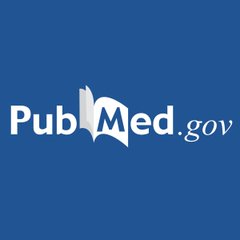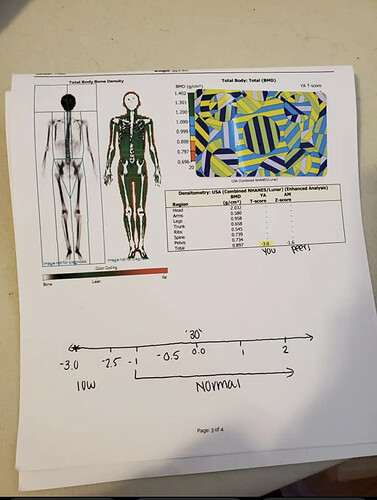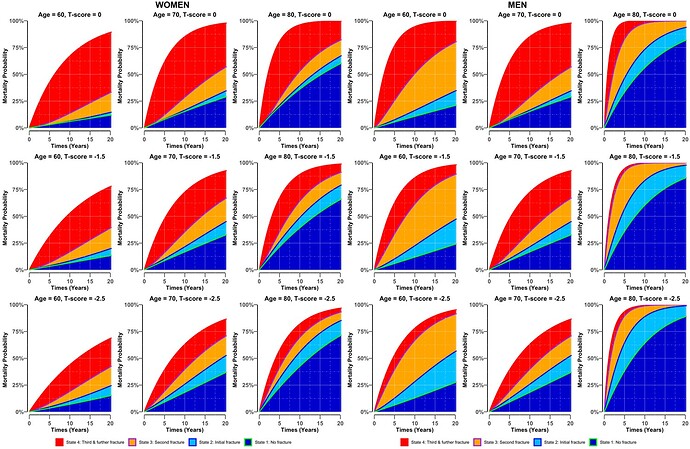Mar0uch 1g8pg6gi, 1n2062oei1d1 ·
I have been asked on many occasions, whether I support the use of N-acetyl-l-cysteine (NAC) for viral infections during the current pandemic. My usual answer is the temporary use of NAC may be beneficial, but long-term use is not recommended. Why?
For that answer, I will show you two recent studies that may surprise you about the long-term effects of using antioxidants, especially potent, relatively novel ones like NAC.
A recent peer-reviewed large-scale study and meta-analysis by Wang and colleagues showed that higher intakes of fruit and vegetables were associated with lower mortality, with the risk reduction highest at about 5 servings of fruit and vegetables per day [1].
Wang and colleagues analyzed data from the Nurses’ Health Study and the Health Professionals Follow-Up Study that included more than 100,000 adults who were followed for up to 30 years. Both datasets included detailed dietary information repeatedly collected every two to four years. Wang et al. also compared their results with data on fruit and vegetable intake and death from an additional 26 studies that included atotal of about 1.9 million participants collected from 29 countries around the world [1].
The results of their study and analysis showed that higher intakes of most subgroups of fruits and vegetables were associated with lower mortality, with the exception of starchy vegetables such as peas and corn. Intakes of fruit juices and potatoes were not associated with total and cause-specific mortality [1].
What happens when individuals take more than 5 servings of fruit and vegetables per day? The data collected by the team revealed that more than 5 servings a day actually resulted in the highest mortality rate — an observation that was not specifically mentioned in their report (see diagram). Do you find it unusual that, similar to vitamin D3, there is an U or inverted J-curve for antioxidants also for all-cause mortality? Do you want to know why higher antioxidants from fruits and vegetables may contribute to reduction in healthspan and lifespan?
For an explanation on the biomolecular level, the recent peer-reviewed paper on how long-term administration of NAC actually increases mitochondrial dysfunction may be able to shed light on this seemingly paradoxical observation.
Peris and his team showed that chronic NAC supplementation becomes pro-oxidant and leads to oxidative stress. Mice fed NAC for 7 days at 1 mg/ml drinking water showed increased mitochondrial reactive oxygen species (ROS) production and reduced oxygen consumption in adipocytes [2]. In adipocytes, the increase in oxidative stress can prevent the browning of white adipose tissues, leading to higher levels of fat accumulation. Animals under chronic NAC supplementation had increased fat pad sizes [2]. Chronic NAC supplementation can result in brown adipose tissue (BAT) dysfunctions. N-acetylcysteine supplementation was found to blunt β3-AR stimulation–induced browning of white adipose tissue and reduced mitochondrial activity in brown adipose tissue due to increased ROS [2].
At this point, I need to alert you to the fact that the amounts used by Peris et al. in this experiment is extremely high; and a person would not be taking such a high amount of NAC under normal circumstances. It is possible that the scientists used a high amount so they can achieve the targeted effect within a relative short time frame of just 7 days, which is equivalent to about 280 human days [3]. The question one needs to ask, especially after the observation that increasing daily fruit/vegetable intake by about 2 servings to 7+ daily can increase mortality, is whether long-term supplementation with potent antioxidants will have the same cumulative effect. And if so, what are the possible mechanisms that can lead to oxidative stress, turning an antioxidant like NAC into a dangerous pro-oxidant that can cause mitochondrial dysfunction.
It is possible that when mitochondria is exposed to an excess level of antioxidants such as NAC, it will cause endogenous antioxidants like glutathione levels to also increase. When reduced glutathione levels become excessive, the disruption in GSH homeostasis can actually backfire. Why? Excess GSH will add electrons to oxygen, changing it into superoxide anion free radicals. This process is known as reductive stress, or stress from too many reducing agents. The diagram below explains the role of excess antioxidants causing reductive stress to induce mitochondrial dysfunctions [2].
Now at this time, I need to remind you that there is a huge difference between NAC, a synthetic newcomer and ancient molecules like ascorbic acid, which is not an antioxidant but a redox molecule, and melatonin the potent endogenous antioxidant that has evolved with all life forms for more than 3 billion years.
N-acetyl-cysteine (NAC) is an acetylated cysteine residue, a synthetic molecule with a very short history. Studies showed that the use of NAC changes the glutathione redox homeostasis to favor the increase of the reduced GSH form [4]. Whereas AA and MEL actually stimulate the production of total GSH, which would not skew the GSH/GSSG ratio to disrupt homeostasis [5].
I hope the post today helps you to understand why I rarely recommend the use of molecules that do not have an established history in evolution.
Have you had your AA and MEL today?*
- Disclaimer: These statements have not been evaluated by the Food and Drug Administration. Ascorbic acid, melatonin and any other product mentioned is not intended to diagnose, treat, cure or prevent any disease.
References:
-
Dong D. Wang, Yanping Li, Shilpa N. Bhupathiraju, Bernard A. Rosner, Qi Sun, Edward L. Giovannucci, Eric B. Rimm, JoAnn E. Manson, Walter C. Willett, Meir J. Stampfer, Frank B. Hu. Fruit and Vegetable Intake and Mortality: Results From 2 Prospective Cohort Studies of US Men and Women and a Meta-Analysis of 26 Cohort Studies. Circulation, 2021; DOI: 10.1161/CIRCULATIONAHA.120.048996
-
Peris E, Micallef P, Paul A, et al. Antioxidant treatment induces reductive stress associated with mitochondrial dysfunction in adipocytes. J Biol Chem. 2019;294(7):2340-2352. doi:10.1074/jbc.RA118.004253
-
Dutta S, Sengupta P. Men and mice: Relating their ages. Life Sci. 2016 May 1;152:244-8. doi: 10.1016/j.lfs.2015.10.025. Epub 2015 Oct 24. PMID: 26596563.
-
Romagnoli C, Marcucci T, Picariello L, Tonelli F, Vincenzini MT, Iantomasi T. Role of N-acetylcysteine and GSH redox system on total and active MMP-2 in intestinal myofibroblasts of Crohn’s disease patients. Int J Colorectal Dis. 2013;28(7):915-924. doi:10.1007/s00384-012-1632-2
-
Swiderska-Kołacz G, Klusek J, Kołataj A. The effect of melatonin on glutathione and glutathione transferase and glutathione peroxidase activities in the mouse liver and kidney in vivo. Neuro Endocrinol Lett. 2006 Jun;27(3):365-8. PMID: 16816830.






